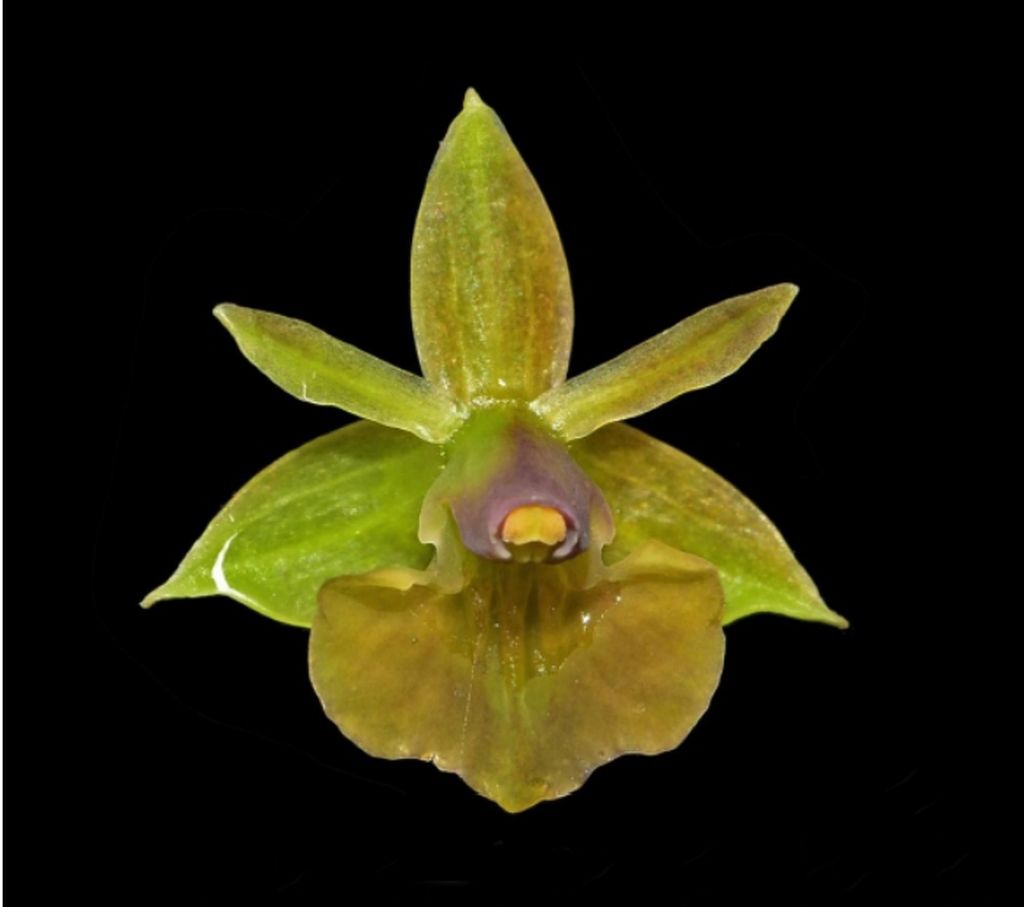

Epidendrum homeieri Hágsater & E.Santiago 2018 GROUP Homeieri
TYPE Photo by © Hugo Medina/TYPE Drawing by R Jimenez and The AMO Herbario Webpage




Common Name Homier's Epidendrum [In honor of I. F. Holton, who collected th in Colombia in the middle of the 19 century. ]
Flower Size .8 to 1" [2 to 2.5 cm]
Found in Loja Province of Ecuador in the Parque Nacional Podocarpu at elevations of 2500 to 3060 meters as a small to medium sized, cold growing epiphyte with cane-like, terete, each new stem produced from a lower internode of the previous stem, base covered by a single leafless sheath .38" [9.5 mm] long, tubular, rugose stems carrying 2 to 3, distributed along the apical half of the stem, articulate, coriaceous, straight to somewhat falcate, lustrous above, glaucous on the underside with tubular, infundibuliform when dry, rugose basal sheaths, blade linear-lanceolate, acute, minutely apiculate, margin crenulate leaves that blooms in the later winter and earlier spring on a terminal, apical, simple, distichous, arching, arising through a tubular, conduplicate, acute, at the end of a short and ancipitose, .72" [18 mm] long spathe, peduncle .8 to .18" x .04" [20 to 45 x 1 mm], thin, laterally compressed, rachis terete, thin, slightly sinuous, 1.6 to 2.4" [4 to 6 cm] long overall, laxly simultaneously,5 flowered inflorescence with , nearly as long as the ovary, linear-lanceolate, acuminate, embracing floral bracts and carrying distichous, non fragrant flowers with the lip always facing the rachis, green tinged dirty purple to pale yellow-green, and then the lip ochre-green, the apex of the column pale purple.
"Epidendrum homeieri does not appear to belong to any of the known groups, and thus we establish a new GROUP Homeieri characterized by the cane-like stems, produced in succession from below the middle of the previous stem, inflorescence laxly few-flowered, distichous, with a laterally compressed, ancipitose, two-winged peduncle, subtended by a large spathe, tubular at base, acute; the flowers have the lip partially united to the column, somewhat less than half the length of the column, lip entire, ecallose, with 3 ribs on the disc. The species is recognized by the .72" [18 mm] long spathe, flowers pale yellowish green to green tinged dirty purple, sepals 2.12 to .248" [5.3 to 6.2 mm] long; lip entire, united the basal half of the column, widely separated above, ecallose, with 3 evident parallel ribs and an orbicular thickening near the apex. Epidendrum subliberhombicum Hágsater & E.Santiago is florally very similar, but the stems are slightly thickened along the apical half, the inflorescence has up to 100 densely distributed flowers, sepals .14" to .208" [3.5 to 5.2 mm] long, the lip is 3-lobed with the base slightly unguiculate, and without any ribs. Epidendrum subliberum C.Schweinf. has thickened stems along the apical half, a dense inflorescence of ca. 120 reddish brown flowers, sepals .128 to .152" [3.2 to 3.8 mm] long; lip 3-lobed, free from the column, without ribs and the margin erose, column thin and straight. The short, laterally compressed, two-winged peduncle below the large spathe is reminiscent of species of Epidendrum aristatum Ackerman & Montalvo, though in that species the peduncle is much longer, and the rachis very short, with the flowers produced singly in succession." Hagsater etal 2018
SynonymsReferences W3 Tropicos, Kew Monocot list , IPNI ; * Icones Orchidacearum 16[1] Plate 1624 Hagsater / Santiago 2018 photo/Drawing fide; Orchid Digest Vol 83 #2 2019 photo fide;
--------------------------------------------------------------------------------------------------------------------------